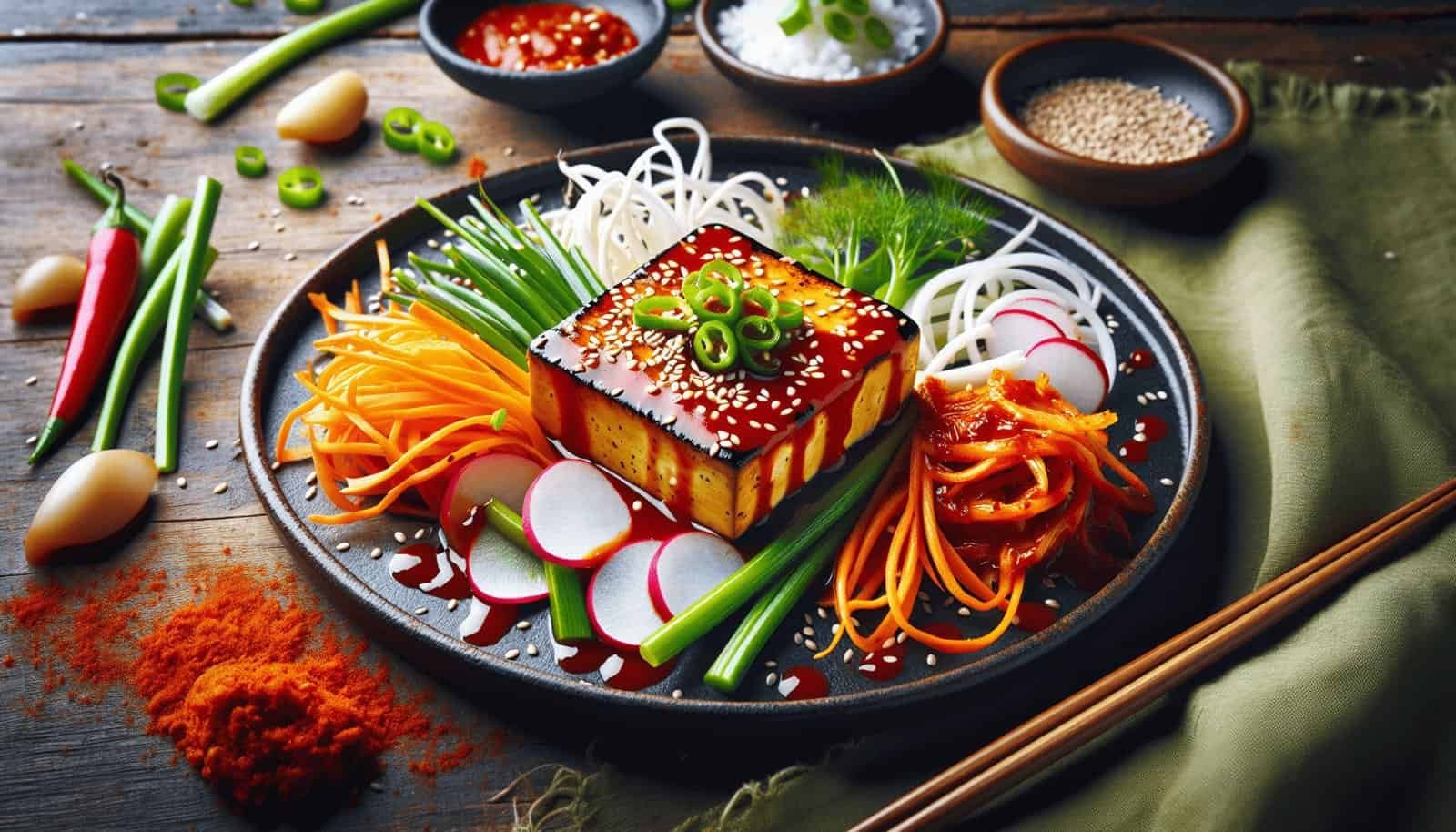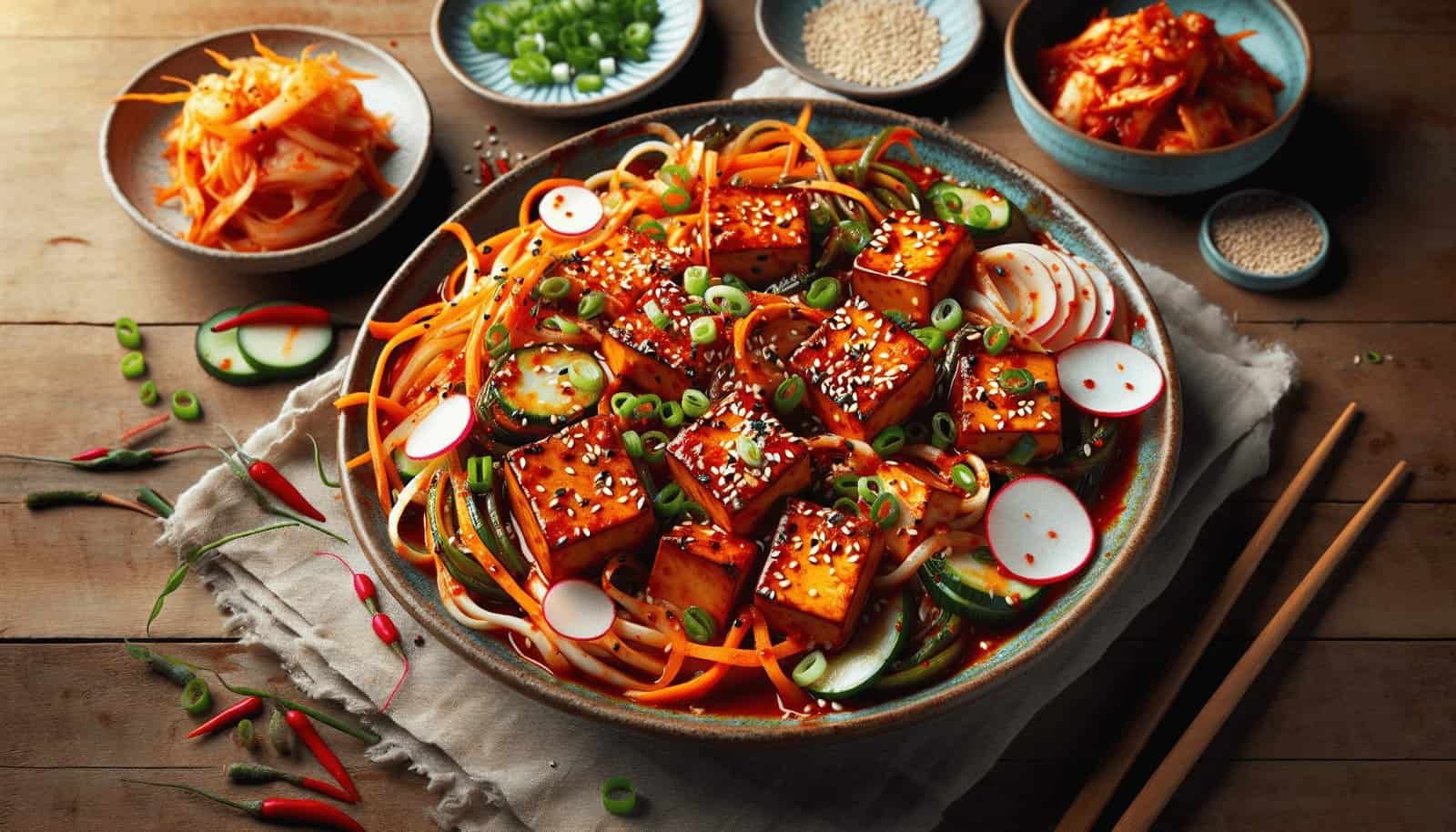How do you incorporate Korean flavors into modern plant-based protein dishes? If you’re curious about this culinary fusion, you’re in the right place. Korean cuisine offers a vibrant and rich tapestry of flavors that can elevate any dish to new heights, especially when combined with plant-based proteins. In this article, we will explore ways to bring authentic Korean ingredients and techniques into delicious and nutritious modern plant-based dishes.
Key Elements of Korean Cuisine
Understanding the basic elements of Korean cuisine can help you appreciate how these flavors can enrich plant-based dishes. Korean cooking is characterized by bold flavors, fermented ingredients, and diverse textures. The essential components that make Korean food unique include soy sauce, gochujang, sesame oil, and kimchi, among others.
Soy Sauce
This ingredient is a staple in many Asian kitchens, offering a salty and slightly sweet flavor that’s crucial in Korean cooking. For plant-based dishes, soy sauce can add depth to marinades, soups, and stir-fries.
Gochujang
A spicy and savory red chili paste, gochujang is the heart and soul of many Korean dishes. It’s made from chili powder, glutinous rice, fermented soybeans, and salt. Adding gochujang can kick up the heat while giving a unique umami flavor to your plant-based proteins.
Sesame Oil
Sesame oil is another essential in Korean cuisine. It imparts a rich, nutty flavor and is often used as a finishing touch rather than a cooking medium. It’s excellent for drizzling over salads and finishing off cooked veggies.
Kimchi
Kimchi is a fermented vegetable dish, most commonly made with napa cabbage and Korean radishes. It’s tangy, spicy, and packed with probiotics. Including kimchi in your plant-based diet can not only add flavor but also provide health benefits.

Plant-Based Proteins Suitable for Korean Flavors
Before diving into recipes, let’s talk about plant-based proteins that can seamlessly blend with Korean flavors. Some proteins work better than others depending on the dish you’re looking to create.
Tofu
Tofu is a versatile plant-based protein that soaks up flavors readily. It can be used in soups, stir-fries, and even grilled dishes.
Tempeh
Tempeh offers a firmer texture compared to tofu and a nutty flavor that pairs well with the bold spices of Korean cuisine. It’s perfect for grilling and sautéing.
Seitan
Seitan, also known as wheat gluten, has a chewy texture that mimics meat. This makes it an excellent choice for dishes that require a more substantial protein.
Lentils and Beans
While not traditionally used in Korean cuisine, lentils and beans can be adapted to incorporate Korean flavors, especially in soups and stews.
Plant-based Chicken or Beef Substitutes
These are commercially available and can easily substitute animal proteins in Korean-inspired dishes. They usually already contain some seasoning, which can complement the added Korean flavors.

How to Incorporate Korean Flavors: Step-by-Step
Now that you’re familiar with key Korean flavors and suitable plant-based proteins, let’s explore some methods for incorporating these into your meals.
Start with Marinades
Marinades are a fantastic way to infuse plant-based proteins with Korean flavors. Here’s a simple gochujang marinade that works well with tofu, tempeh, and seitan:
Ingredients:
| Ingredient | Quantity |
|---|---|
| Gochujang | 3 tbsp |
| Soy sauce | 2 tbsp |
| Sesame oil | 1 tbsp |
| Minced garlic | 3 cloves |
| Rice vinegar | 1 tbsp |
| Maple syrup | 1 tbsp |
| Grated ginger | 1 tbsp |
| Water | 2 tbsp |
Instructions:
- Mix all the ingredients in a bowl until well combined.
- Marinate your choice of protein (tofu, tempeh, seitan) for at least 30 minutes, preferably overnight for deeper flavor.
- Cook the marinated protein by grilling, pan-frying, or baking.
Use Korean Sauces and Pastes
Sauces and pastes like gochujang and doenjang (fermented soybean paste) add instant Korean flair to your dishes. You can whip up a quick sauce to drizzle over Buddha bowls or use as a stir-fry sauce.
Simple Gochujang Stir-fry Sauce:
| Ingredient | Quantity |
|---|---|
| Gochujang | 2 tbsp |
| Soy sauce | 2 tbsp |
| Maple syrup | 1 tbsp |
| Rice vinegar | 1 tbsp |
| Sesame oil | 1 tsp |
| Water | 2 tbsp |
- Combine all the ingredients in a small bowl.
- Stir-fry your choice of vegetables and plant-based protein, then pour the sauce over and cook until everything is coated and heated through.
Incorporate Kimchi
Add kimchi to your plant-based proteins for an extra kick. Kimchi can be sautéed with tofu or mixed into a lentil stew for added flavor and probiotics.
Kimchi Tofu Stir-fry:
- Sauté 1 cup of chopped kimchi in a hot pan with a bit of oil.
- Add diced tofu and cook until the tofu is golden and well mixed with the kimchi.
- Serve atop a bowl of steamed rice or quinoa.
Build Korean-inspired Bowls
Bowls are a fantastic way to combine various elements into a balanced, flavorful meal. Here’s an idea for a Korean-inspired Buddha bowl.
Ingredients:
| Ingredient | Quantity |
|---|---|
| Cooked brown rice | 1 cup |
| Sautéed spinach | 1/2 cup |
| Grilled gochujang tempeh | 1/2 cup |
| Kimchi | 1/2 cup |
| Pickled vegetables | 1/3 cup |
| Sesame seeds | 1 tsp |
| Drizzle of sesame oil | Optional |
- In a bowl, layer your cooked rice as the base.
- Arrange the sautéed spinach, grilled tempeh, kimchi, and pickled vegetables on top.
- Sprinkle with sesame seeds and a drizzle of sesame oil to finish.
Create Korean Stews and Soups
Traditional Korean stews and soups can also be adapted to plant-based diets. The key is to use rich broths and robust flavors.
Vegan Kimchi Jjigae (Kimchi Stew):
Ingredients:
| Ingredient | Quantity |
|---|---|
| Kimchi, chopped | 2 cups |
| Kimchi juice | 1/2 cup |
| Firm tofu, cubed | 200g |
| Vegetable broth | 4 cups |
| Gochugaru (Korean chili flakes) | 2 tbsp |
| Soy sauce | 1 tbsp |
| Garlic, minced | 2 cloves |
| Sesame oil | 1 tbsp |
Instructions:
- Heat sesame oil in a pot and sauté minced garlic until fragrant.
- Add kimchi and kimchi juice, and cook for about 5 minutes.
- Pour in the vegetable broth and bring to a boil.
- Add the tofu cubes and gochugaru, then simmer for 15-20 minutes.
- Season with soy sauce and more salt if needed.
- Serve hot, garnished with green onions if desired.

Adapting Traditional Recipes
Sometimes, the best way to incorporate Korean flavors is by adapting traditional Korean dishes to fit a plant-based lifestyle. Here are a few ideas:
Bibimbap
Bibimbap is a signature Korean dish that can easily be made plant-based. Traditionally, it includes rice topped with a variety of vegetables, a fried egg, and gochujang sauce. For a plant-based version, simply skip the egg and add more colorful veggies.
Plant-Based Bibimbap:
- Arrange cooked rice in a bowl.
- Top with sautéed veggies such as spinach, carrots, zucchini, mushrooms, and bean sprouts.
- Add a generous dollop of gochujang.
- Garnish with sesame seeds and nori strips.
Japchae
Japchae is a popular Korean noodle dish made with sweet potato noodles, vegetables, and sometimes meat. For a plant-based version, all you need to do is omit the meat.
Vegan Japchae:
Ingredients:
| Ingredient | Quantity |
|---|---|
| Sweet potato noodles | 200g |
| Spinach, blanched | 1 cup |
| Carrot, julienned | 1 |
| Bell peppers, sliced | 1 cup |
| Soy sauce | 3 tbsp |
| Sesame oil | 1 tbsp |
| Garlic, minced | 2 cloves |
| Onion, sliced | 1 small |
| Mushrooms, sliced | 1 cup |
| Green onions, chopped | 2 |
| Sesame seeds | 1 tsp |
Instructions:
- Cook sweet potato noodles according to package instructions. Drain and set aside.
- In a pan, heat sesame oil and sauté garlic and onion.
- Add the carrots, bell peppers, mushrooms, and spinach. Cook until tender.
- Stir in the cooked noodles and soy sauce.
- Toss everything together until it’s well mixed and heated through.
- Garnish with green onions and sesame seeds before serving.

Conclusion
Incorporating Korean flavors into modern plant-based protein dishes is an exciting and delicious way to diversify your meals. Through the use of key Korean ingredients like gochujang, soy sauce, sesame oil, and kimchi, you can create dishes that are both flavorful and nutritious. Whether choosing to adapt traditional recipes or create new fusion dishes, the possibilities are endless. So go ahead, start experimenting in your kitchen and enjoy the burst of savory, spicy, and umami-packed flavors that Korean cuisine has to offer!

